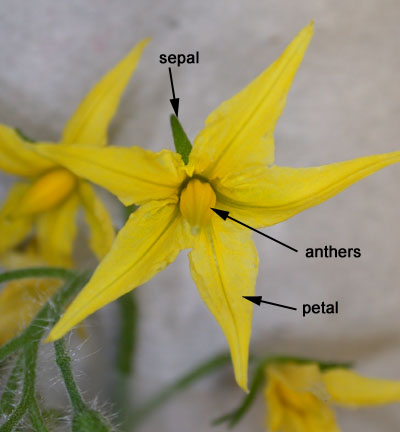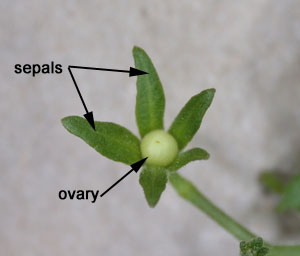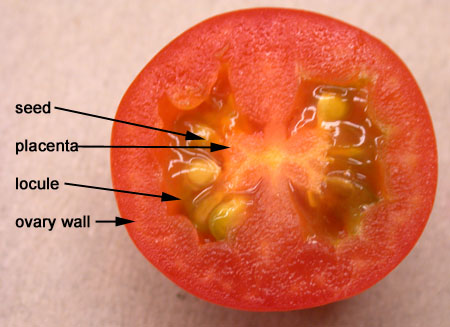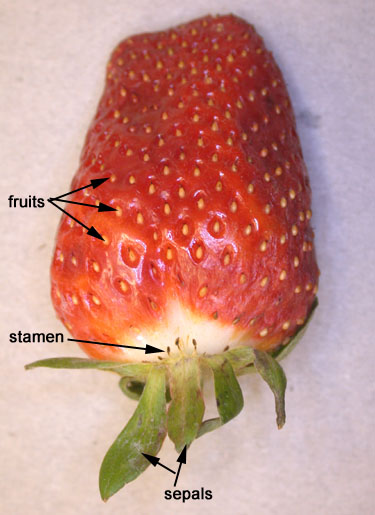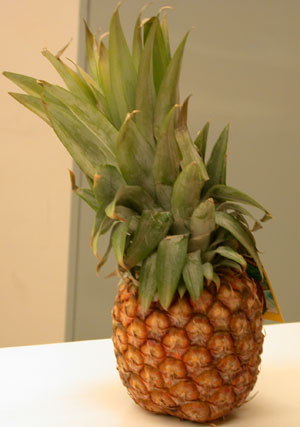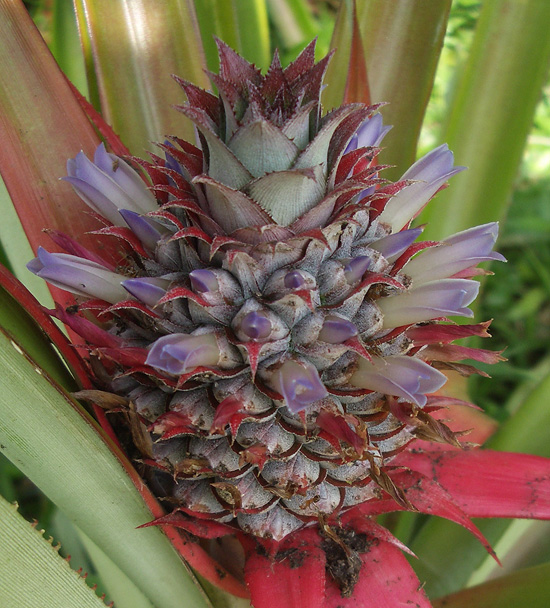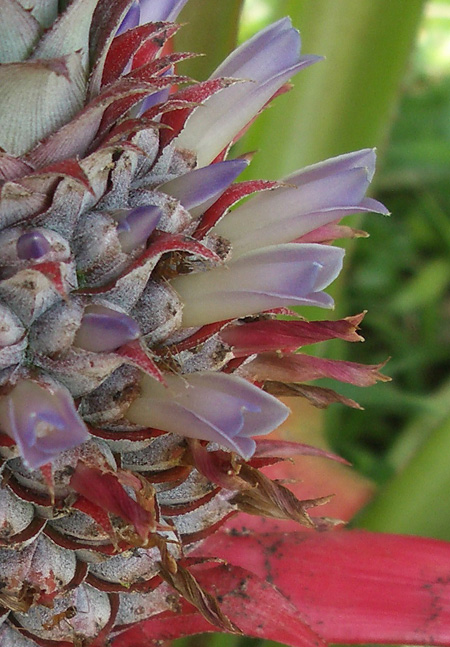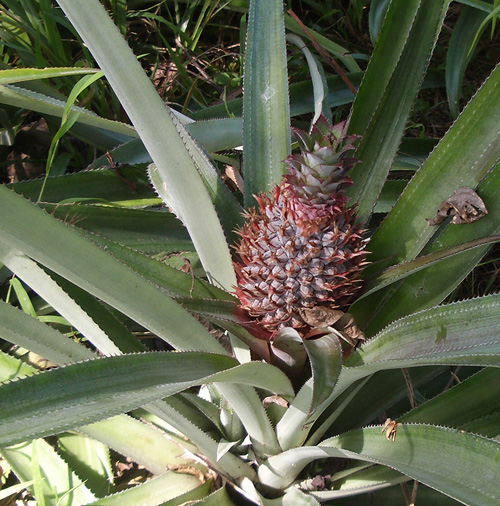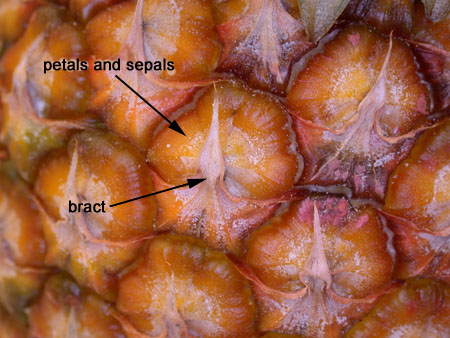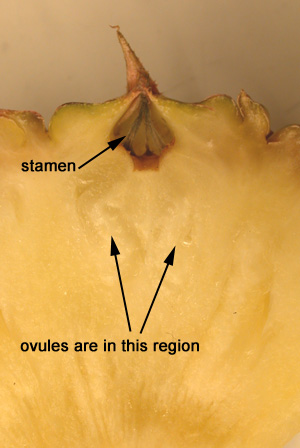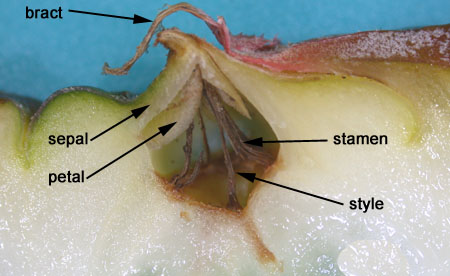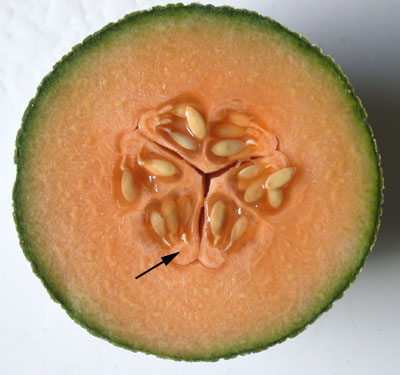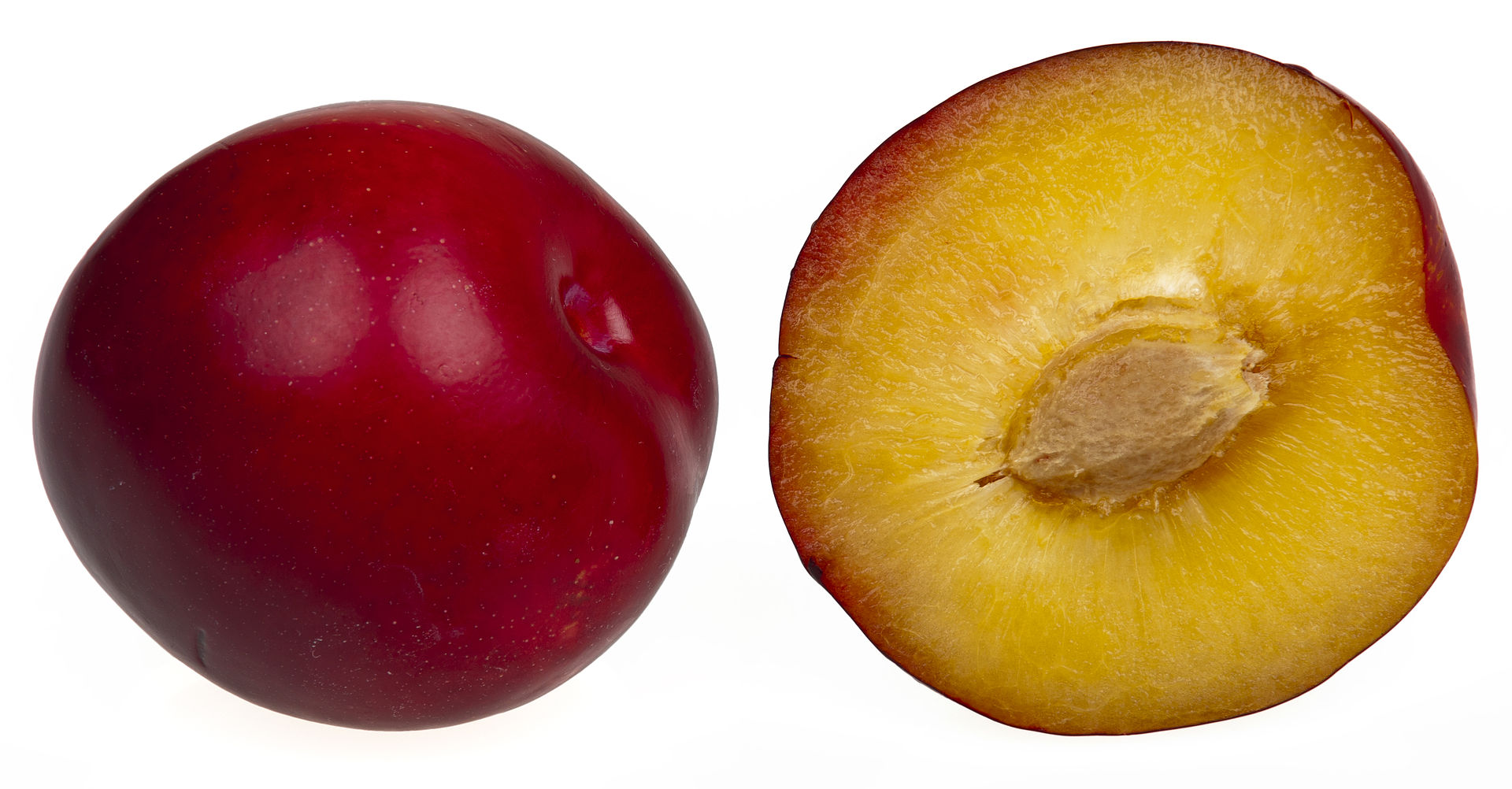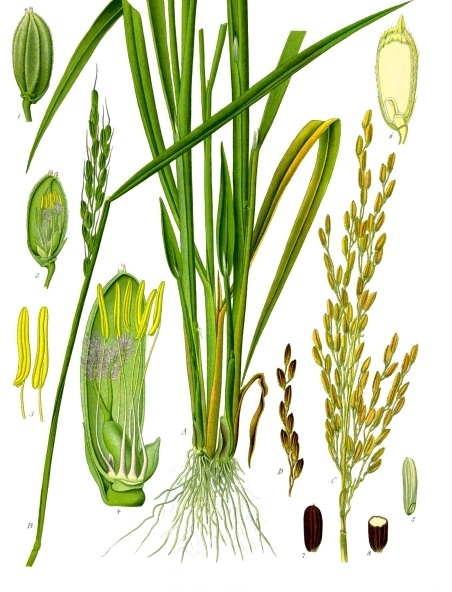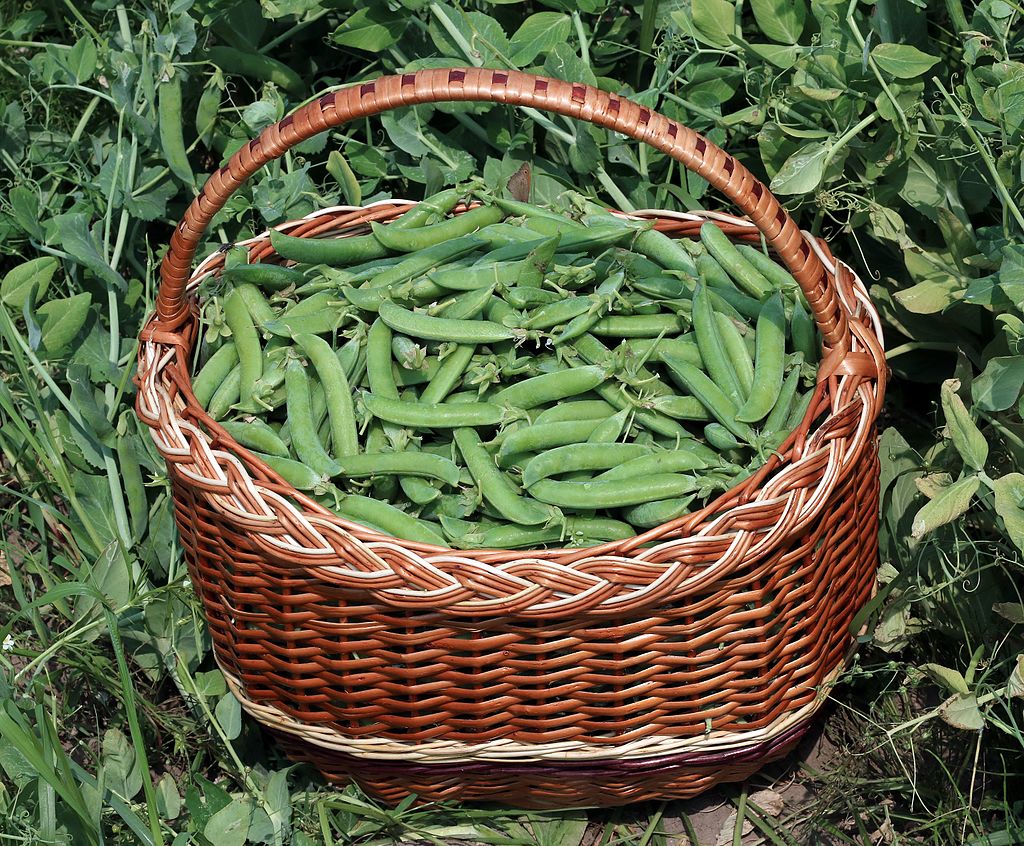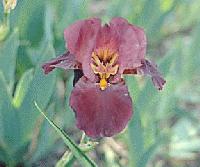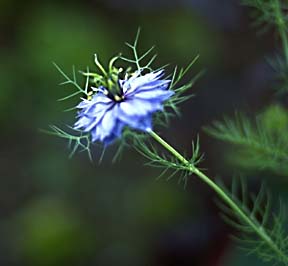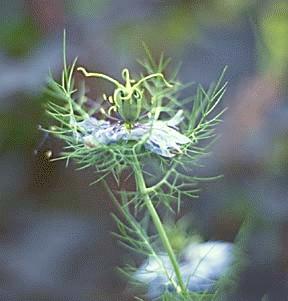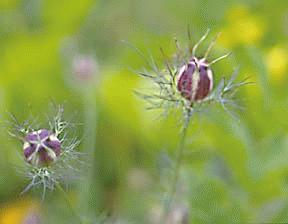FRUIT DEVELOPMENT
How do you get a fruit from a flower?
The ovary wall develops into the fruit. In many cases the fruit is fleshy and sweet. This makes the fruit tasty so that animals will aid in the dispersal of seeds.
Solanum esculentum (tomato)
Here is a picture of a tomato flower. The anthers are long and form a cone in the centre of the flower.
The petals and stamen are fused so when you pull on the anthers the petal-anther comes off to reveal the superior ovary. There is one ovary per flower.
Here is a cross-section through the fruit. You can see that it has axile placentation. There are many ovules (seeds). What type of fruit is the tomato?
Fragaria (strawberry)
Here is a picture of a strawberry flower. If you look closely to the centre of the flower you can see many pistils.
A nice picture featuring flowers and “fruit”.
The strawberry we eat is really not “the fruit”. The fruits are actually the tiny “seed-like” things (achenes) over the surface of the swollen red receptacel. Each of the achenes developed from a separate pistil. If we consider the fruit as being the part that we eat then we actually eat the receptacle (an accessory part). You can see that defining fruit types can be a ittle complicated! The strawberry flower would have had many separate pistils. You can see the stamens of the flower still present. The petals have long since gone, but you can see the sepals.
Ananas comonus (pineapple)
We are all familiar with the pineapple “fruit”. The pineapple is actually made up of many flowers.
Here is a pineapple in flower.
There are a number of flowers on a stalk.
The flower stalk enlarges.
Here is the outside surface of a pineapple. Each rhomboidal unit represents one flower.
Here is a section through one of the rhomboidal units.
This section through the pineapple shows the modified flower parts of one rhomboidal unit.
Try and identify the fruit types of the following using your lab manual (answers at bottom)
Malus (apple)
The part of the apple we eat is actually mostly accessory tissue (hypanthium). The ovary is a small layer next to and including the apple core. In fact the apple core is the innermost layer of the ovary wall. It is tough because it is made up of sclereids.
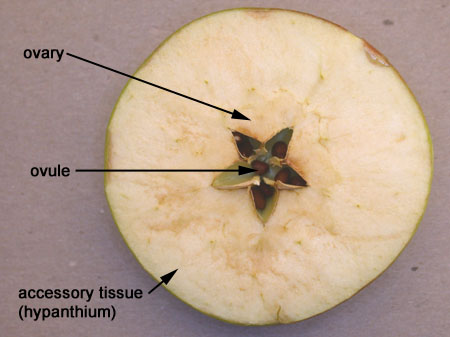
Cantaloupe
Here is a cross-section through a cantaloupe. This is an example of parietal placentation.
Plum
Plums, and other stone fruits like cherries, have a hard pit, the pit consists of a hard endocarp that surrounds the seed.
Rice
Rice belongs to the grass family (Poaceae) along with many other important crops such as wheat and corn (maize). The fruits of Poaceae are characterized by a single seeded dry indehiscent fruit with the pericarp wall fused to the seed.
Pea
These pea pods are immature, at maturity the fruit will dry out and split open to reveal a single locule with peas in a row.
Iris
This single flower is modified so that it has three distinct landing pads for insects (three for the price of one!). Reflecting the trimerous symmetry of the flower the pistil is made of three fused carpels. Each flower will develop into a fruit. Irises do not produce fleshy fruit, but rather a dry fruit that splits open at maturity to reveal many seeds.
Here the fruit developed from an Iris flower that has split open or dehisced. Note that the seeds of this species, Iris foetidissima, have a fleshy seed coat termed an aril.
Nigella
It is a member of Ranunculaceae. It has a pretty blue-purple flower. The ovary is superior.
After pollination and subsequent fertilization the ovary, with its developing seeds, enlarges.
This is a fruit of the plant. It has openings to let out the seeds.
Fruit types:
Apple is a Pome.
Cantaloupe (and melons, squashes etc) is a Pepos (a Berry with a harder outer layer)
Plum is a Drupe
Rice is a grain (all members of the grass family have grains).
Pea is a legume (Many members of the pea family, such as beans and chickpeas, have legumes).
Iris and Nigella are capsules
2. DEVELOPMENT OF OVULE AND SEED
DEVELOPMENT OF FEMALE GAMETOPHYTE
3. FLOWERS OF SELECTED SPECIES
4. DEVELOPMENT OF THE FRUIT FROM THE FLOWER

